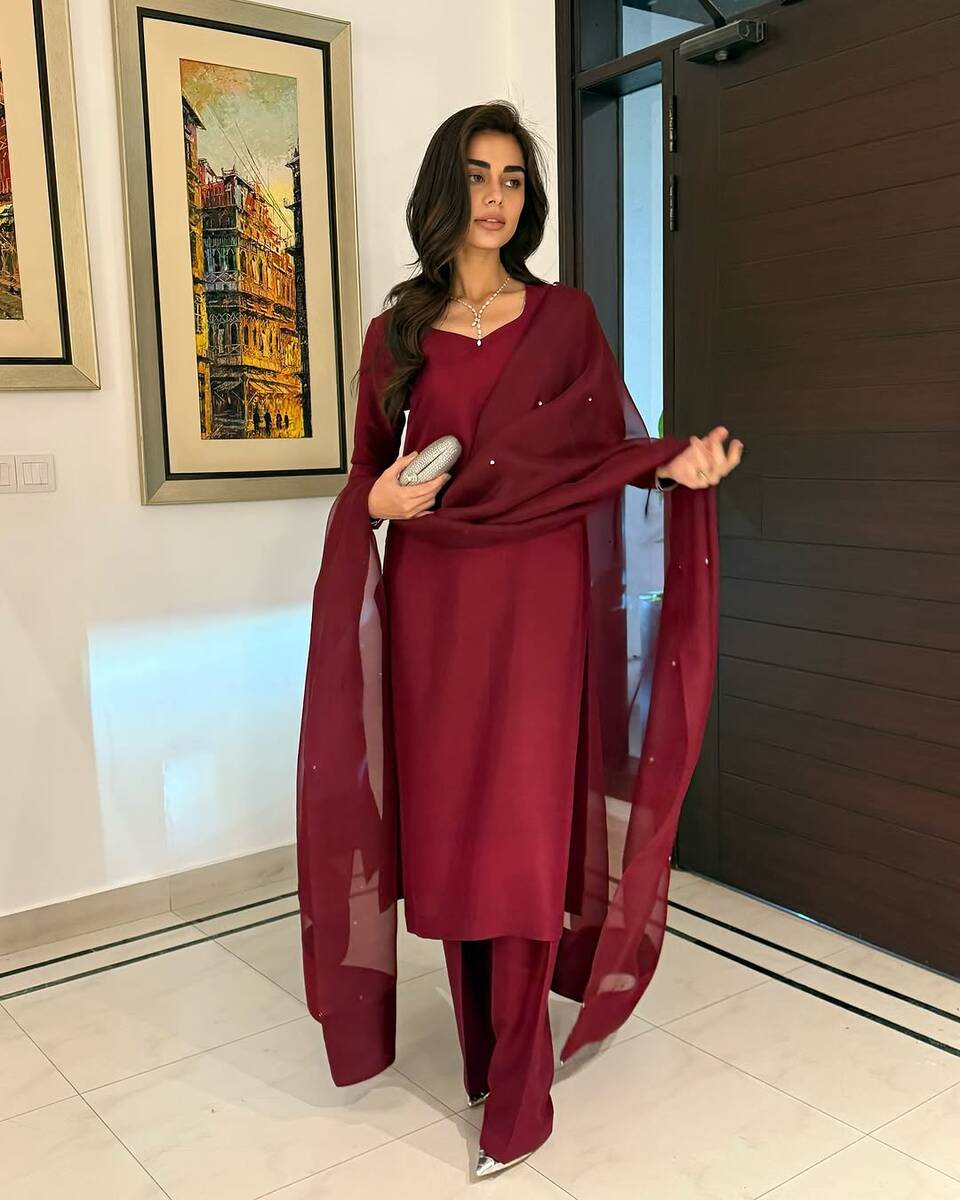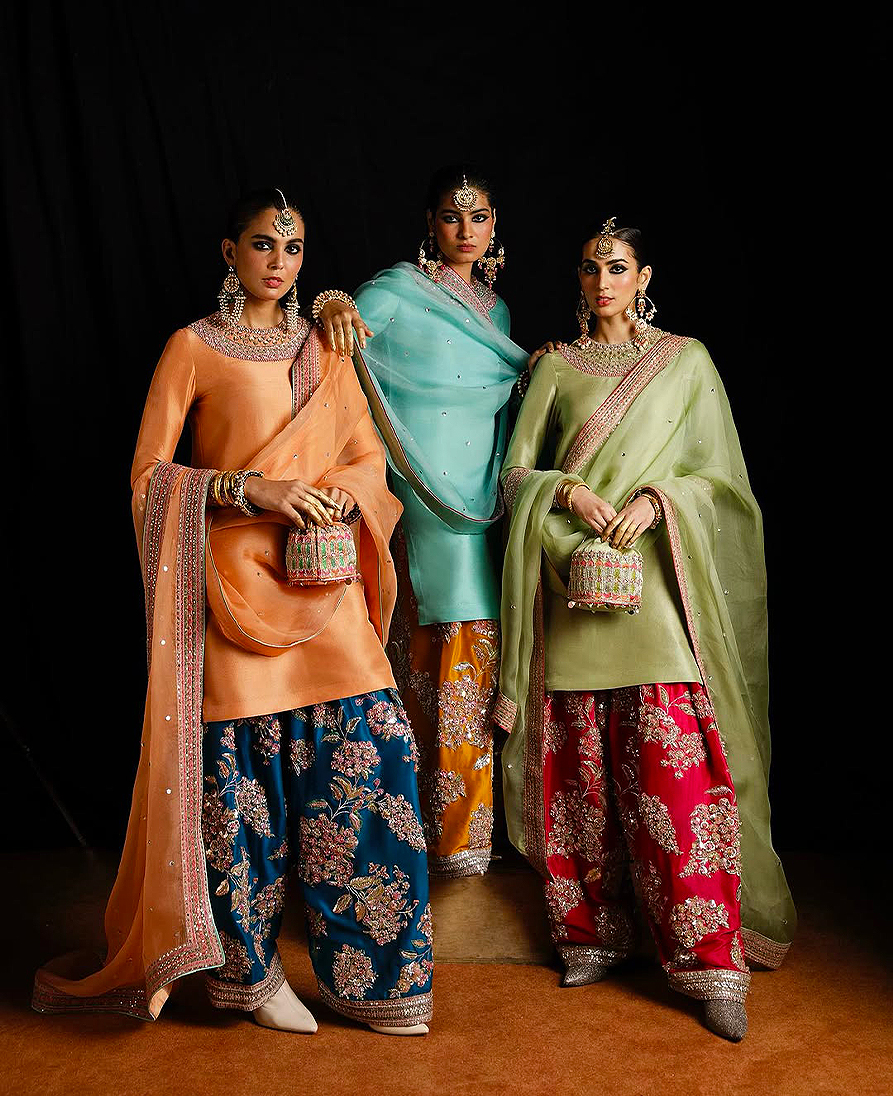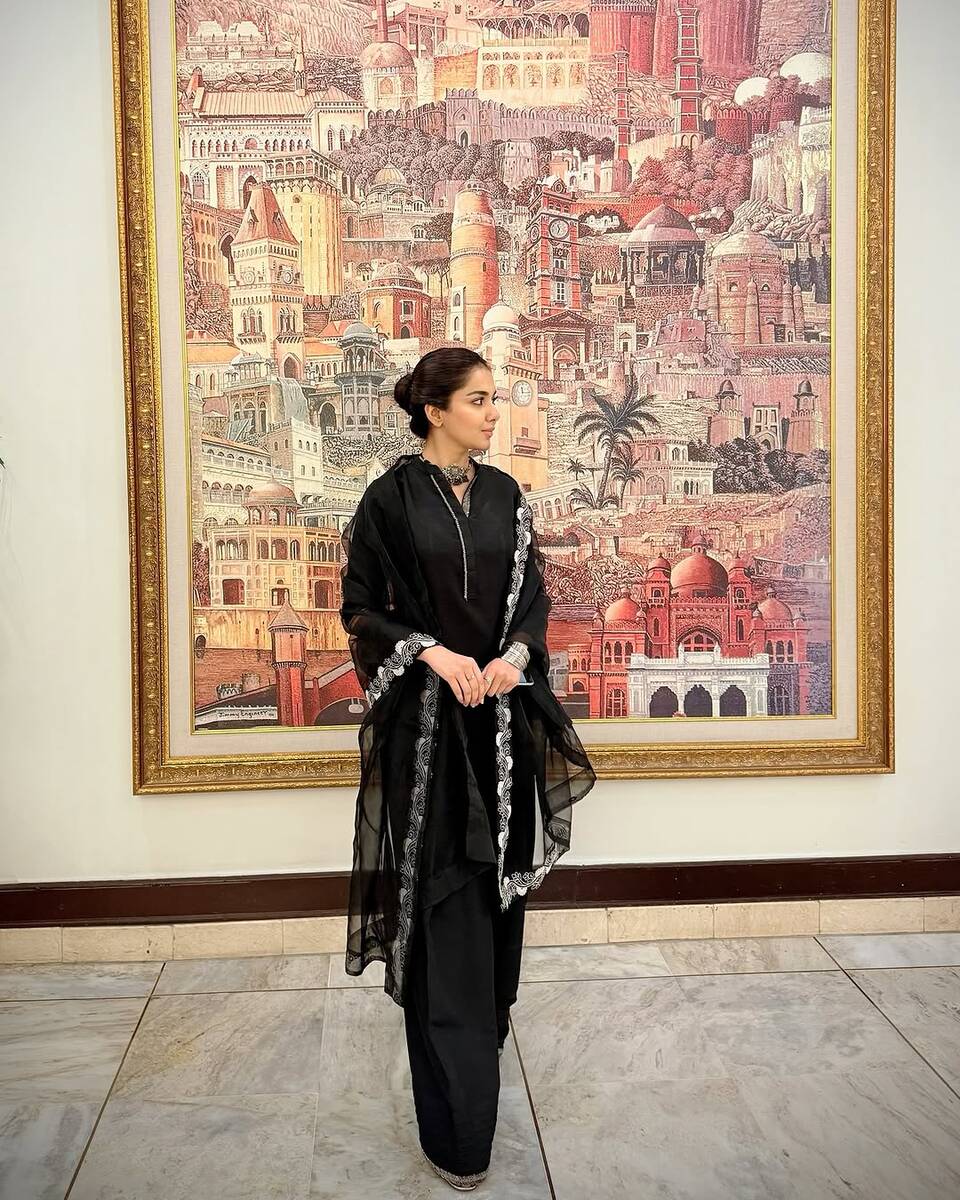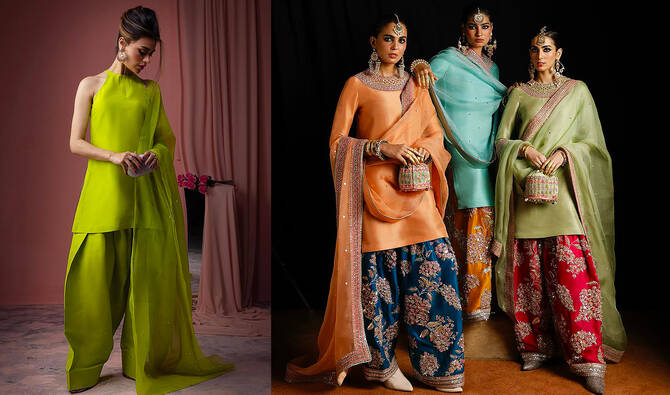KARACHI: A centuries-old staple of South Asian closets, the farshi shalwar, is back in Pakistan and ruling fashion trends this Eid Al-Fitr.
The word “farshi” comes from the Persian word “farsh,” meaning “floor,” and the farshi shalwar, particularly popular in Pakistan and northern India, is characterized by its floor-length, flowing and wide, loose pants, creating a dramatic and graceful silhouette.
“Right now, it’s the hottest trend,” fashion stylist and director Tabesh Khoja, popularly known as Khoji, told Arab News, saying he first styled a farshi shalwar in 2023 for the fashion label of model and actress Sadaf Kanwal.
“I styled Sadaf Kanwal actually and after that I have seen every other designer doing a farshi shalwar version of their own,” Khoja said.

The picture posted by Sadaf Kanwal Fashion on February 15, 2025, shows Pakistani model Sadaf Kanwal wearing farshi shalwar from her latest collection. (Sadaf Kanwal Fashion/Instagram)
No doubt, Kanwal seems to have played a key role in bringing the farshi shalwar back this Ramadan and Eid, with her label Sadaf Kanwal Fashion creating a number of outfits over the last two years featuring the baggy trousers.
“Throughout the [last] year, I shot so many collections of so many designers and all of those designers at least used to have two farshi shalwars for sure in their collections,” Khoja said. “So it took us an entire year to make it a fashion trend.”
According to the stylist, the trend dated back to the 17th century and was popular among noble women in the Mughal era. Modeled after the flowing gowns worn by British noblewomen, the complete outfit consists of three basic parts: a kurta or a long shirt, dupatta or long stole, and the third and most important, the farshi shalwar or pajama, a flowing two-legged trouser held by drawstrings that falls straight to the ankles from where it starts flaring and flowing copiously onto the floor, trailing as one walks.
In media, iconic movies such as Umrao Jaan (1981) and Shatranj Ke Khilari (1977) that depict Muslim culture of 19th-century Lucknow show noblewomen and royal courtesans wearing farshi shalwars.
“They had a variety of silhouettes in terms of a kurta or a jacket on top, among other things. The outfit has been there, the silhouette has been there since the 17th century but how you make it relevant now is very important,” Khoja added.

The picture, posted on August 4, 2022, by the Instagram page " Purana Pakistan," shows Pakistani women wearing farshi shalwar in 1970s. (Hibah Najeeb via Purana Pakistan)
HOW TO STYLE A FARSHI SHALWAR?
According to Khoja, some of the popular ways to style the farshi shalwar include pairing it with a button down shirt and accessorizing it with different kinds of jewelry pieces and hairdos.
“You can dress it up or dress it down. Sadaf [Kanwal] uses big organza dupattas. You can do big shawls also like [actress] Mahira Khan wore [designer] Banto Kazmi’s when she got an award at the UK Parliament. So something of that sort also with a plain silhouette.”

The picture, posted on July 16, 2023, shows Pakistani models wearing farshi shalwar by designer Hussain Rehar. (Hussain Rehar)
Pakistani actress Tuba Anwar said celebrities had been wearing farshi shalwars since last year but the trend had “peaked” among the general public in recent months. For her, the fact that everyone would be wearing the baggy trousers this Eid reduced their appeal.
“I was planning to wear farshi shalwar on this Eid and then when everybody started discussing it, I was like ‘No, this is not what I’m going to wear because I have to do something very different’.”
When she wore farshi shalwars at all, Anwar said she preferred them in solid colors.
“In terms of styling, I would like to wear it with solid colors, not a lot of embroidery going on, not a lot of things or abstract things going on in the clothes that I am going to wear,” she said.

Pakistani actor Tuba Anwar is seen wearing farshi shalwar. (Tuba Anwar)
The farshi shalwar craze is not limited to women alone.
Actor and host Fahad Mustafa has donned the farshi shalwar look on his hit gaming show Jeeto Pakistan during Ramadan. Singer and songwriter Falak Shabbir has been seen in the outfit as well.
“It’s certainly not limited to women. Fahad Mustafa was of course wearing it on Jeeto Pakistan. I am going to wear it on Eid,” Khoja said. “So, you will see a lot of people of different sorts, male and female, wearing it.”

Pakistani actor and host Fahad Mustafa r is seen wearing farshi shalwar. (Fahad Mustafa)














